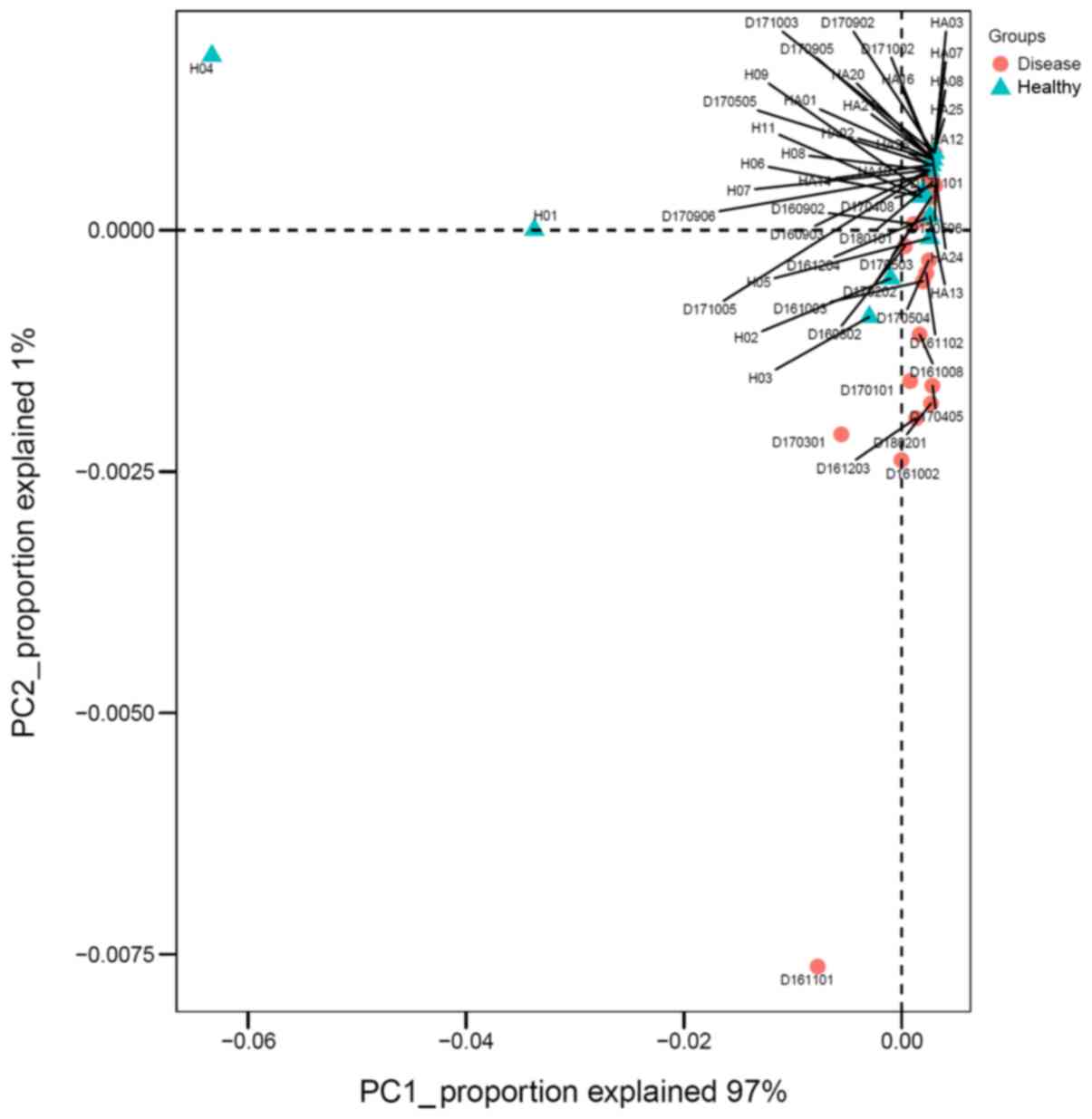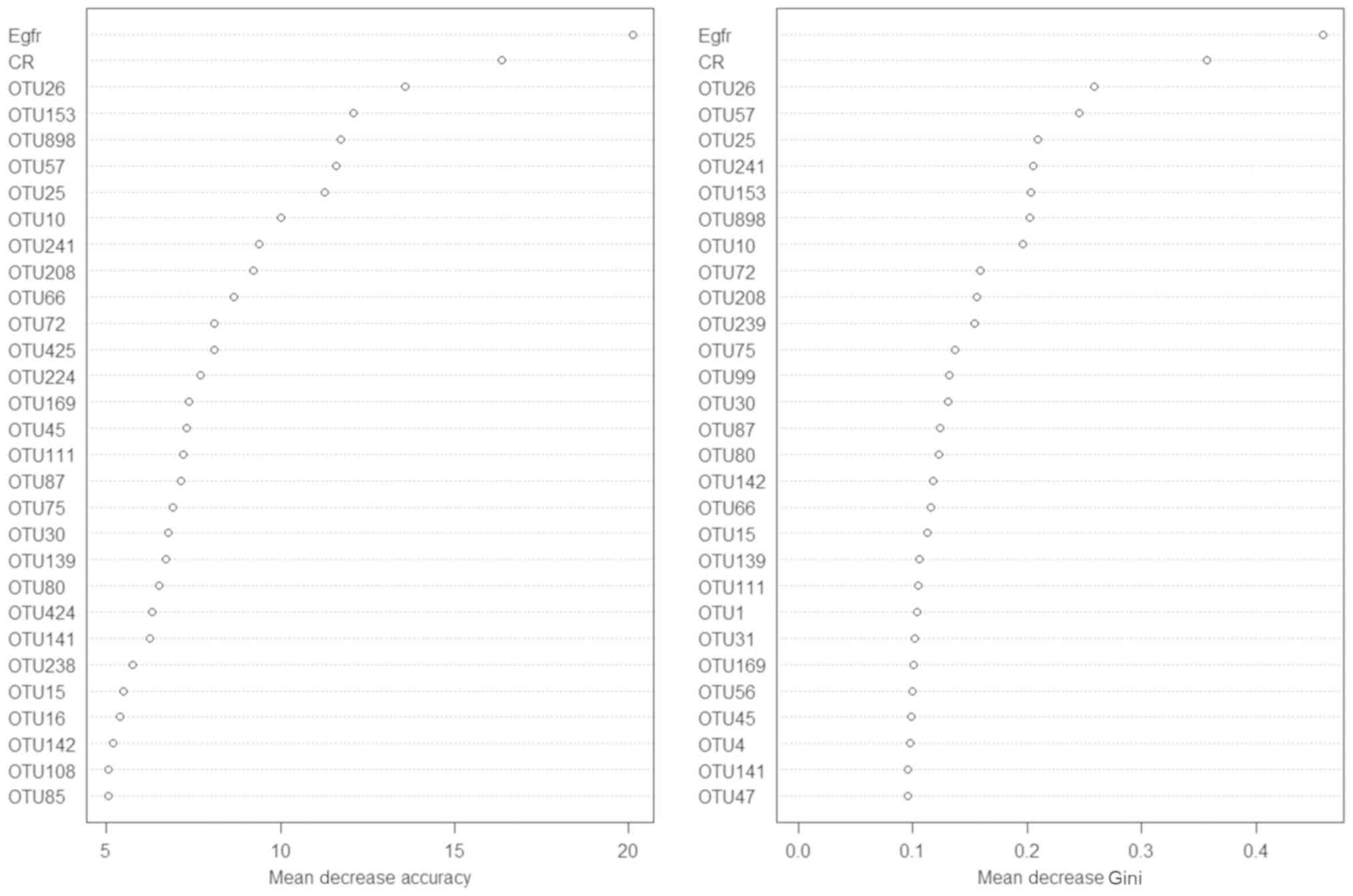|
1
|
Moriyama T, Tanaka K, Iwasaki C, Oshima Y,
Ochi A, Kataoka H, Itabashi M, Takei T, Uchida K and Nitta K:
Prognosis in IgA nephropathy: 30-year analysis of 1,012 patients at
a single center in Japan. PLoS One. 9:e917562014. View Article : Google Scholar : PubMed/NCBI
|
|
2
|
Barbour SJ, Cattran DC, Kim SJ, Levin A,
Wald R, Hladunewich MA and Reich HN: Individuals of Pacific Asian
origin with IgA nephropathy have an increased risk of progression
to end-stage renal disease. Kidney Int. 84:1017–1024. 2013.
View Article : Google Scholar : PubMed/NCBI
|
|
3
|
Salvadori M and Rosso G: Update on
immunoglobulin A nephropathy, Part I: Pathophysiology. World J
Nephrol. 4:455–467. 2015. View Article : Google Scholar : PubMed/NCBI
|
|
4
|
Floege J and Eitner F: Current therapy for
IgA nephropathy. J Am Soc Nephrol. 22:1785–1794. 2011. View Article : Google Scholar : PubMed/NCBI
|
|
5
|
Nagasawa Y, Iio K, Fukuda S, Date Y,
Iwatani H, Yamamoto R, Horii A, Inohara H, Imai E, Nakanishi T, et
al: Periodontal disease bacteria specific to tonsil in IgA
nephropathy patients predicts the remission by the treatment. PLoS
One. 9:e816362014. View Article : Google Scholar : PubMed/NCBI
|
|
6
|
Sekirov I, Russell SL, Antunes LC and
Finlay BB: Gut microbiota in health and disease. Physiol Rev.
90:859–904. 2010. View Article : Google Scholar : PubMed/NCBI
|
|
7
|
Arumugam M, Raes J, Pelletier E, Le
Paslier D, Yamada T, Mende DR, Fernandes GR, Tap J, Bruls T, Batto
JM, et al: Enterotypes of the human gut microbiome. Nature.
473:174–180. 2011. View Article : Google Scholar : PubMed/NCBI
|
|
8
|
Bron PA, van Baarlen P and Kleerebezem M:
Emerging molecular insights into the interaction between probiotics
and the host intestinal mucosa. Nat Rev Microbiol. 10:66–78. 2011.
View Article : Google Scholar : PubMed/NCBI
|
|
9
|
Maynard CL, Elson CO, Hatton RD and Weaver
CT: Reciprocal interactions of the intestinal microbiota and immune
system. Nature. 489:231–241. 2012. View Article : Google Scholar : PubMed/NCBI
|
|
10
|
Slack E, Hapfelmeier S, Stecher B,
Velykoredko Y, Stoel M, Lawson MA, Geuking MB, Beutler B, Tedder
TF, Hardt WD, et al: Innate and adaptive immunity cooperate
flexibly to maintain host-microbiota mutualism. Science.
325:617–620. 2009. View Article : Google Scholar : PubMed/NCBI
|
|
11
|
Kronbichler A, Kerschbaum J and Mayer G:
The influence and role of microbial factors in autoimmune Kidney
diseases: A systematic review. J Immunol Res. 2015:8580272015.
View Article : Google Scholar : PubMed/NCBI
|
|
12
|
Aas JA, Paster BJ, Stokes LN, Olsen I and
Dewhirst FE: Defining the normal bacterial flora of the oral
cavity. J Clin Microbiol. 43:5721–5732. 2005. View Article : Google Scholar : PubMed/NCBI
|
|
13
|
Mager DL, Haffajee AD, Devlin PM, Norris
CM, Posner MR and Goodson JM: The salivary microbiota as a
diagnostic indicator of oral cancer: A descriptive, non-randomized
study of cancer-free and oral squamous cell carcinoma subjects. J
Transl Med. 3:272005. View Article : Google Scholar : PubMed/NCBI
|
|
14
|
Farrell JJ, Zhang L, Zhou H, Chia D,
Elashoff D, Akin D, Paster BJ, Joshipura K and Wong DT: Variations
of oral microbiota are associated with pancreatic diseases
including pancreatic cancer. Gut. 61:582–588. 2012. View Article : Google Scholar : PubMed/NCBI
|
|
15
|
Watanabe H, Goto S, Mori H, Higashi K,
Hosomichi K, Aizawa N, Takahashi N, Tsuchida M, Suzuki Y, Yamada T,
et al: Comprehensive microbiome analysis of tonsillar crypts in IgA
nephropathy. Nephrol Dial Transplant. 32:2072–2079. 2017.PubMed/NCBI
|
|
16
|
Acinas SG, Klepac-Ceraj V, Hunt DE,
Pharino C, Ceraj I, Distel DL and Polz MF: Fine-scale phylogenetic
architecture of a complex bacterial community. Nature. 430:551–554.
2004. View Article : Google Scholar : PubMed/NCBI
|
|
17
|
Pedrós-Alió C: Marine microbial diversity:
Can it be determined? Trends Microbiol. 14:257–263. 2006.
View Article : Google Scholar : PubMed/NCBI
|
|
18
|
Piccolo M, De Angelis M, Lauriero G,
Montemurno E, Di Cagno R, Gesualdo L and Gobbetti M: Salivary
microbiota associated with immunoglobulin A nephropathy. Microb
Ecol. 70:557–565. 2015. View Article : Google Scholar : PubMed/NCBI
|
|
19
|
Gmur R and Thurnheer T: Direct
quantitative differentiation between Prevotella intermedia
and Prevotella nigrescens in clinical specimens.
Microbiology. 148:1379–1387. 2002. View Article : Google Scholar : PubMed/NCBI
|
|
20
|
Kononen E: Pigmented Prevotella
species in the periodontally healthy oral cavity. FEMS Immunol Med
Microbiol. 6:201–205. 1993. View Article : Google Scholar : PubMed/NCBI
|
|
21
|
Kumar PS, Griffen AL, Moeschberger ML and
Leys EJ: Identification of candidate periodontal pathogens and
beneficial species by quantitative 16S clonal analysis. J Clin
Microbiol. 43:3944–3955. 2005. View Article : Google Scholar : PubMed/NCBI
|
|
22
|
Finegold SM: Host factors predisposing to
anaerobic infections. FEMS Immunol Med Microbiol. 6:159–163. 1993.
View Article : Google Scholar : PubMed/NCBI
|
|
23
|
Moreno JA, Martin-Cleary C, Gutierrez E,
Toldos O, Blanco-Colio LM, Praga M, Ortiz A and Egido J: AKI
associated with macroscopic glomerular hematuria: Clinical and
pathophysiologic consequences. Clin J Am Soc Nephrol. 7:175–184.
2012. View Article : Google Scholar : PubMed/NCBI
|
|
24
|
Shemesh O, Golbetz H, Kriss JP and Myers
BD: Limitations of creatinine as a filtration marker in
glomerulopathic patients. Kidney Int. 28:830–838. 1985. View Article : Google Scholar : PubMed/NCBI
|
|
25
|
Caregaro L, Menon F, Angeli P, Amodio P,
Merkel C, Bortoluzzi A, Alberino F and Gatta A: Limitations of
serum creatinine level and creatinine clearance as filtration
markers in cirrhosis. Arch Intern Med. 154:201–205. 1994.
View Article : Google Scholar : PubMed/NCBI
|
|
26
|
Rule AD, Rodeheffer RJ, Larson TS, Burnett
JC Jr, Cosio FG, Turner ST and Jacobsen SJ: Limitations of
estimating glomerular filtration rate from serum creatinine in the
general population. Mayo Clinic Proc. 81:1427–1434. 2006.
View Article : Google Scholar
|

















